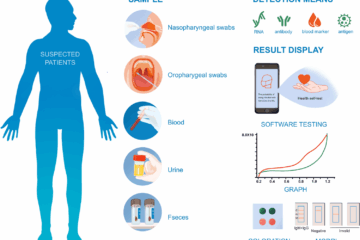
If you have health insurance, there’s a good chance you’ll pay more for it in 2016.
Health care and health insurance costs increase year to year, like most expenses. Since the implementation of the Affordable Care Act, growth in premiums has mostly slowed (as has the rise in health care costs overall), while your share of expenses – like deductibles – has increased. For several reasons, increases in both premiums and other out-of-pocket costs are expected in the coming year.
You can cope with these cost increases by understanding how they’ll happen and what you can do to mitigate their effects. How they affect you depends largely on where you get your insurance.
Employer-Based Health Insurance
About half of all Americans receive health insurance through an employer, less than in years past. Although having a job with health insurance is a perk, that doesn’t mean the benefit comes cheap.
Employer-based insurance premiums have grown relatively modestly over the past few years, according to Sabrina Corlette, senior research fellow and project director of Georgetown University’s Center on Health Insurance Reforms. This is due, in part, to slower growth in health care costs, but also because employers are shifting other costs to their workers, a practice known as “cost-sharing.”
For instance, the number of workers with a health insurance deductible grew from 55 percent in 2006 to 80 percent in 2014, and the average deductible more than doubled, from $584 for individual coverage to $1,217, according to the Kaiser Family Foundation. Further, more employers are offering only plans with high deductibles.
In 2016, if you receive your insurance through your job, you may see modest premium increases and are likely to see increased cost-sharing, like bigger deductibles.
Depending on the size of your employer, you will likely have a few plan options at open enrollment time, which is usually in the fall. Here are some tips for choosing the right health plan to help keep costs in check:
● Opt for a smaller provider network (HMO) or a high-deductible plan if you’ll feel the pinch in premiums. Both of these options could reduce your monthly costs. Remember, these plans have trade-offs. In an HMO, you have less freedom to go to the doctors of your choice. With a high-deductible health plan, you’ll cover more of your health care costs upfront until your insurance starts picking up the tab.
● Choose a higher premium plan like a PPO if the thought of that big deductible scares you. These plans may have higher monthly costs, but allow you greater freedom to visit the doctors you want without such high out-of-pocket expenses.
● Take advantage of health spending accounts no matter your plan choice. These accounts allow you to set aside pre-tax dollars for out-of-pocket medical expenses, and they’re usually taken directly from your paycheck. The two most common types are health savings accounts and flexible spending accounts. HSAs are available only to people with high-deductible plans, but have benefits over FSAs because you are able to carry your unused balance from year to year. With FSAs, if you don’t use the money you’ve allocated to the account, you’re likely to lose it at the end of the year.
“Marketplace”-Based Health Insurance
During the second open enrollment period of the ACA, an estimated 11.7 million people had selected or were automatically re-enrolled in health insurance plans on the federal and state marketplaces, according to the Department of Health and Human Services.
Recent media coverage of planned 2016 premium hikes refers to plans purchased by individuals on these health care exchanges. But these reports don’t tell the whole story.
“The data that’s out there about 2016 premiums is a little deceiving,” Corlette says. “And that’s because, in most states, the only rates that have to be posted right now are those that are proposed to be over 10 percent increases.” Insurance companies projecting more modest increases, therefore, don’t have to share that publicly, creating a skewed sample.
But, Corlette says, that doesn’t mean there won’t be premium increases. They’re driven largely by rising prescription drug costs, insurers having a clearer picture of their policyholders’ health care needs and the end of temporary “risk mitigation” programs that gave cash incentives to insurers for approving everyone.
In 2016, if you buy your insurance on state or federal health insurance marketplaces, you’re likely to see both increased premiums and cost-sharing. But unlike employer-based coverage, increased premiums on these plans are often offset by subsidies.
The solution, as with employer coverage, lies in shopping carefully.
● Reapply for the premium tax credit or health care subsidies. The Department of Health and Human Services estimates 87 percent of people purchasing marketplace plans receive this financial assistance to help lower premium costs. Updating your income information each year will ensure you’re getting the maximum allowable benefit.
● Be flexible and willing to part with your current plan. As costs change, the government may label another marketplace plan the “benchmark,” or the plan to which subsidy amounts are tied. If the price of your current plan goes up and another goes down, that lower-priced option may be deemed the benchmark. By switching plans, you’ll likely avoid cost increases altogether.
“The subsidy is almost like a gift card,” Corlette says. “So if you take it and stay in your same plan, even though that plan has gone up, yes, you’ll be paying more. But if you take it and go shop for a lower-priced plan, you should be fine.”
● Apply for Medicaid or CHIP coverage if you have children. If you make too much to qualify for Medicaid, your children could still be eligible for it or for The Children’s Health Insurance Program. Both are designed to provide health insurance to children at no or low cost. Eligibility varies by state, income and family size. In some states, children in a family of four could be eligible even if the household adjusted gross monthly income is as much as $6,000 or $7,000.
Stay Calm
When you’re reading about potentially dramatic health care cost increases, 2016 doesn’t seem so far off. Take this time to understand what is and isn’t working for you on your current plan and what your other options are. This way, when open enrollment comes around, you’re prepared to make savvy decisions about your health care.
[Source:- US news]




